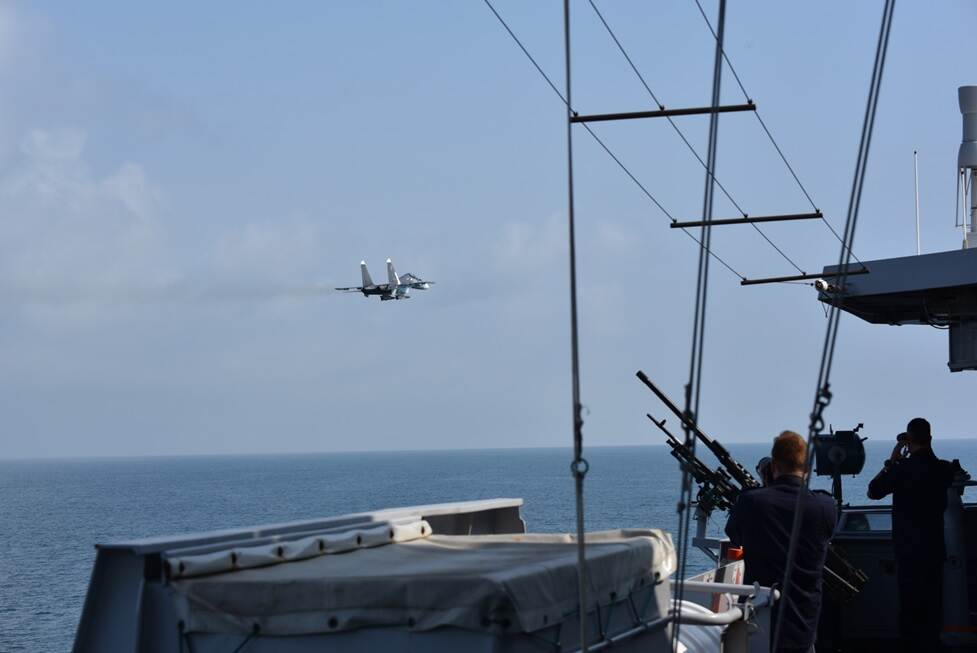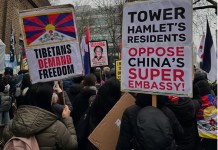The Royal Netherlands Navy frigate Zr.Ms. Evertsen (HNLMS Evertsen) was “repeatedly harassed” and intimidated by a Russian Su-30SM aircraft in the Black Sea, the Dutch Ministry of Defence claimed.
The Zr. Ms. Evertsen, that is part of the HMS Queen Elizabeth carrier strike group, was sailing 70 nautical miles southeast of Crimea when the Russian jets armed with supersonic missiles conducted mock attacks on the frigate on June 24.
The incident occurred a day after UK Navy’s Type 45 destroyer, HMS Defender, allegedly sailed 3km into the Russian waters.
The Russian Defence Ministry said a Russian coast guard patrol ship fired warning shots at the British vessel while a Su-24 dropped bombs in its path, forcing it to change its course.
These claims were, however, denied by the UK’s Ministry of Defence (MoD). It also added that the ship was sailing in Ukrainian waters. Ben Wallace, British Defence Secretary, said in a statement that HMS Defender was conducting a “routine transit” from Odesa towards Georgia across the Black Sea and had entered the internationally recognized traffic corridor.

Even though the British MoD downplayed the incident involving HMS Defender, the Dutch Defence Ministry referred to the June 24 incident as “irresponsible”.
“The planes repeatedly harassed the Everts between about 3.30 pm and 8.30 pm local time. They flew dangerously low and close by, performing mock attacks. The fighters were armed with bombs and so-called air-to-surface missiles […]. After hours of intimidation, disruptions to electronic equipment of the Evertsen also took place”, the Dutch MoD said in an official statement.
Dutch Defence Minister Ank Bijleveld-Schouten called the Russian actions irresponsible saying, “The Russian actions violated the right to the free use of the sea. In addition, they go against mutual agreements, as laid down in the INCSEA treaty. The agreement must prevent unsafe situations at sea.”
“Sr.Ms. Evertsen has every right to sail there. There is no justification whatsoever for this kind of aggressive action, which also unnecessarily increases the risk of accidents. The Netherlands will address Russia about this,” she added.
The images released by the Dutch MoD show Russian Naval Aviation Su-30SMs flying close and low over Zr. Ms. Evertsen. At least one of the multirole aircraft appears to carry two Kh-31 missiles (NATO reporting name: AS-17 Krypton).

The Kh-31 is a Mach 3 anti-radar and anti-ship missile, which has been in production since the 1980s. Different versions of the missile are available with different warheads.
According to ‘Russia’s Air-Launched Weapons’ by Piotr Butowski, “the most interesting element of the Kh-31 design is an integral rocket-ramjet propulsion system, the 31DPK (izdeliye 52), developed by the Soyuz engine design bureau in Turayevo outside Moscow”.
The Kh-31A is the anti-ship derivative of the Kh-31 missile which entered production in 1990. Since it is equipped with an active radar speaker and has a radio altimeter for a precise low-altitude flight over water. Its maximum range is 50 km and the minimum launch distance is 7.5 km. The upgraded Kh-31AM is believed to have an extended range (120-160 km), according to The Aviationist.
The Su-30SM is a modernized 4+ generation version of the original Russian Su-30 fighter aircraft. It is a super-maneuverable multi-role fighter that was created according to the specifications of the Russian Aerospace Forces. The current generation Su-30SM and their variants have the AL-31F engine on board which provides a maximum thrust of 12,500 kilogram-force.
The Su-30SM is considered one of the world’s finest dogfighters with upgrades being done to equip it with credible BVR engagement options (beyond visual range). The Su-30SM is a combat-ready fighter, although its production has been halted in favor of the more competent Su-30SM2, which is at present starting its service in the Russian Air Force.
HNLMS Evertsen is one of the four air defense and command frigates (LCF) of the De Zeven Provinciën class. Under the leadership of Damen Naval in Vlissingen, these advanced LCF frigates were built between 1998 and 2005 by the Dutch maritime industry. At the time, more than 80 percent of the production value was accounted for by Damen’s Dutch maritime suppliers, mostly SMEs, which underlines the self-creative capabilities of this sector.
Written by Kashish Tandon




